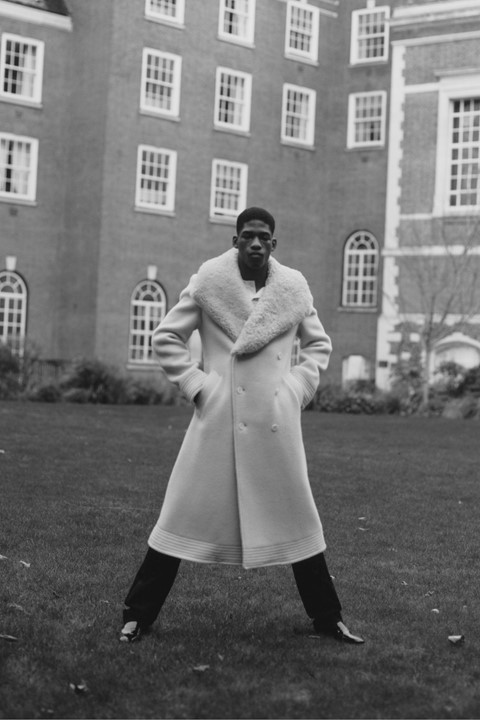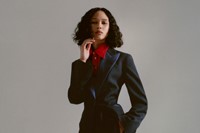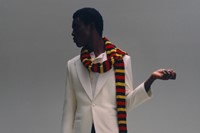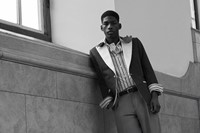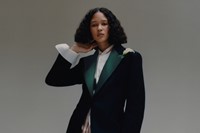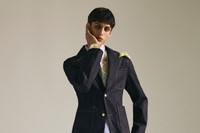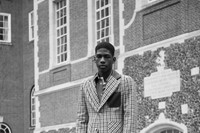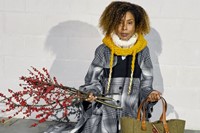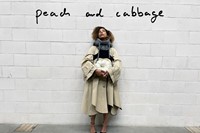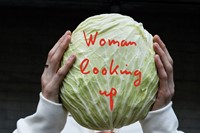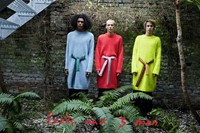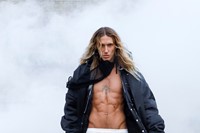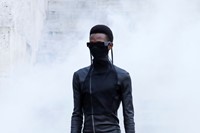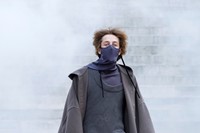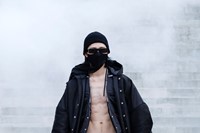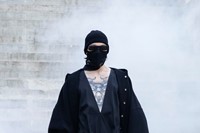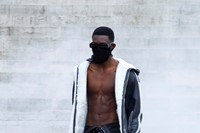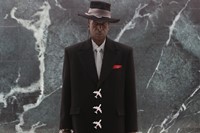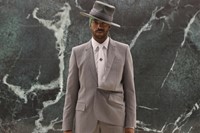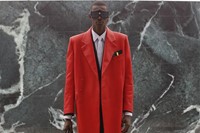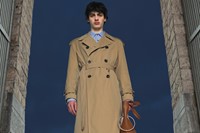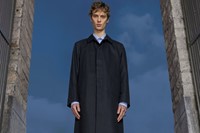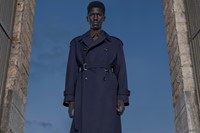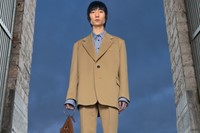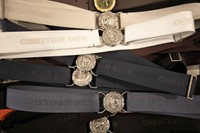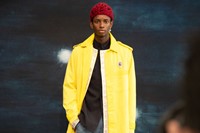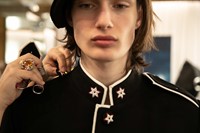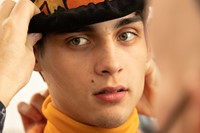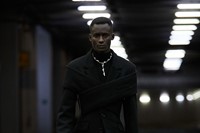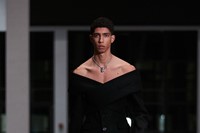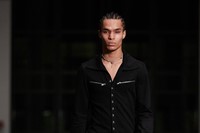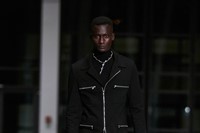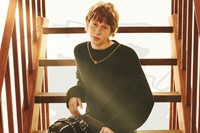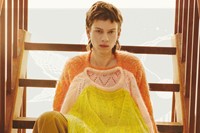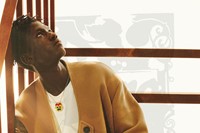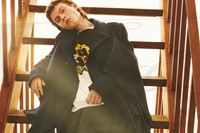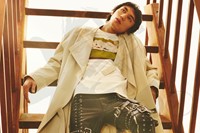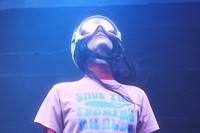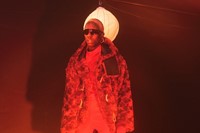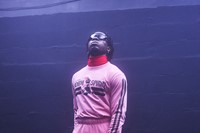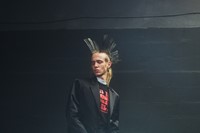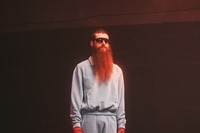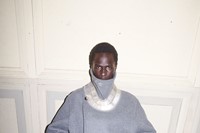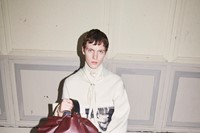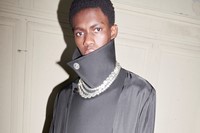We round up ten of the best collections of the Autumn/Winter 2021 menswear season – from Kim Jones’ collaboration with Peter Doig at Dior, to Grace Wales Bonner tribute to Black students at Oxford University
Wales Bonner
Grace Wales Bonner’s collection – entitled Black Sunlight – concluded a trilogy which explored the threads connecting Britain and the Caribbean. For this part, Wales Bonner turned her astute eye towards the history of Black students at Oxford University, particularly drawn to the work of radical thinkers at the institution in the 1980s. Citing the influence of poet Derek Walcott’s expansive use of language – “the English language is nobody’s special property … it is the property of the imagination: it is the property of the language itself,” he is quoted as saying on the release, the collection is defined by a sense of fluidity, a “reimagining in the crafting of the offering”. It lent the beautiful collection a sense of wistful romanticism: softly cut tailoring in plaid, denim and wool, enveloping shearling overcoats, varsity-style knitwear in an amalgam of coloured stripes. An accompanying film by Wales Bonner alongside Jamaican filmmaker Jeano Edwards, captured between Kingston, Jamaica and London’s Goodenough College, “becomes a memory of the collection … [an] exploration of transcendent, intersectional intellect”.
JW Anderson
This season at his eponymous label Jonathan Anderson said he was working more than ever on instinct, questioning not “why” but “why not?” The resulting men’s collection and women’s pre-collection – captured on a series of poster-sized prints by Juergen Teller, starring a trio of models and the actress Sophie Okonedo – were what Anderson described as “blunt, very honest, raw clothing that is what it is”. This immediate way of working was epitomised by a number of tabard-style tops made from old-season shearling offcuts by Anderson in under an hour. “I wanted it to be something like if you had a blank canvas and these materials, and you just had to do something instinctively with this material in an hour, what can it be?” Anderson told AnOther. “I needed something that brought me back to the beginning when I started fashion. This idea of being like, why not?”
Rick Owens
“A rough sketch of our barbaric contradictory times,” was how Rick Owens described his collection, presented via a filmed, audience-less catwalk show, in which a hazy backdrop of smoke lent the scene an apocalyptic air. An exploration of “male suppressed rage on every side of the moral divide”, it seemed to reference the events which unfolded in Owen’s native United States in the weeks prior to the collection’s launch. Attempting to invoke Gethsemane, the garden in which Jesus prayed the night before his crucifixion – “we’re all living a tense period in history waiting for a resolution, be it catastrophic or rational, in a suspense that feels almost biblical in its drama,” Owens said – a sense of monastic ceremony was evoked through vast overcoats and shroud-like puffa-jackets, while skin-tight leathers, face-coverings and primitive slices of pony skin suggested an underlying sense of foreboding.
Louis Vuitton
Virgil Abloh’s latest menswear collection for Louis Vuitton was presented via a short film directed by Wu Tsang, which took inspiration from James Baldwin’s 1953 Stranger in the Village essay about living as a Black American in a remote Swiss village – “the experience of being recognised and gazed upon as different, illegible,” as the film’s notes described. Filmed between Switzerland and Paris with a cast including Kai-Isaiah Jamal, yasiin bey (Mos Def) and Saul Williams, it foregrounded a collection that sought to challenge the archetypes we construct about the way a person dresses, which are often defined through narrow boundaries of race, gender and sexuality. Instead, Abloh propositioned “neo-types”, whereby recognisable menswear elements – the cowboy hat, pinstripe tailoring, varsity jackets, the trench coat – were amalgamated and mixed-up to create a new conception of “normal”, one no longer “associated with the genetic makeup of certain human beings” and free of prejudice and ownership.
Dries Van Noten
This season, Dries Van Noten presented a menswear collection which offered what the notes deemed a “fresh, new-fashioned, take on the familiar”, “purity abstracted, subtly lavish, calm and open, spare, informal, unceremonious”. An apt response to the current moment, the simply-shot collection – boys stood on stone steps on the backdrop of a darkening blue sky – balanced a want for comfort with the innate, transporting beauty which defines Van Noten’s work. Fluid silk pants, super-soft ribbed knit two-sets – complete with matching leg-warmers – and the usual vivid array of Van Noten’s signature prints will likely please his many devotees, including the six fashion editors who spoke to AnOther last week about the enduring appeal of his designs.
Dior Men
“The collection came from talking to Peter Doig, from looking at his work,” said Kim Jones of his latest collection for Dior Men, talking to AnOther’s Alexander Fury. Jones had already been a longtime fan of the Scottish figurative painter’s work when he was introduced to the artist by milliner and Dior collaborator Stephen Jones, a contemporary who had studied alongside the artist at Central Saint Martins. A free-flowing collaboration – Jones said Doig became a real part of the studio over the course of its creation – the artist’s impact was felt not only in the paint daubs on berets and bowler hats, or the swiggles on pigment-matched knitwear, but also in the attempt to recreate the figurative characters in his portraits. The collection itself evoked what Dior called “the ceremony of the everyday”, with the military jacket as the season’s central garment, imagined here in a rainbow of vivid, Doig-esque tones.
GmbH
Entitled Welt am Draht (World on a Wire) – taken from a 1970s Rainer Werner Fassbinder sci-fi series which suggested we might be living in a computer simulation – Benjamin Huseby and Serhat Isik’s new GmbH collection was the result of a desire to break out of the digital and remember the physical sensations of dressing up. They did so with a focus on the idea of couture – notably, elegant overcoats which nipped the waist and sat just off the shoulder, exposing the decolletage. Elsewhere, faux-leather trousers – their double-zip flies looping right under the crotch – jodhpurs and python-print riding boots struck a sensual mood, while Western-style shirts, rash vests and utility jackets subversively riffed on masculine archetypes.
Loewe
Jonathan Anderson’s Autumn/Winter 2021 men’s runway and women’s pre-collections were presented via the latest incarnation of his ‘show-in-a-box’ concept – this time, ‘A Show in a Book’, a hard-bound monograph of the rarely-seen work of Joe Brainard, part of a generation of queer artists lost to Aids. Brainard’s work – which often returned to the pansy as a recurring motif – featured across the collection, whether as patches or prints, or blown up on enveloping jacquard-knit cardigans and trousers. It was the “immediacy” of the artist’s work which struck Anderson as apt for the current moment: “I haven’t got time to be over-thinking; the book has to happen, the collection has to happen, there’s this immediacy to getting the idea out,” he told AnOther. “It’s an urge to put together something that feels right to me”.
Phipps
Spencer Phipps’ latest collection was entitled ‘Endurance’, exploring humanity’s “determination to explore planet earth and the perils of its utmost extremes,” as the accompanying notes described. Drawing at once from Werner Herzog’s 1974 documentary The Great Ecstasy of Woodcarver Steiner and the explorative journeys of Ernest Shackleton, Phipps looked towards the uniforms of winter sports, melding the form and function of ski-wear with the more whimsical aesthetic of ice skating. “A playful takedown of hypermasculinity,” Phipps says, “clothes for both conquering the ice and skating on it”. The collection also featured Phipps’ ongoing educational slogans about climate – the designer founded his brand on sustainable principles – here “On This Ice” and “The Heart of the Ocean”, the latter nodding to a partnership with Oceanic Global which helps save the world’s oceans through education and activism.
Jil Sander
“Intimate, sharp, layered, utilitarian,“ were the words Jil Sander used to describe Lucie and Luke Meier’s focussed new menswear collection for the brand, which was unveiled via a series of clean and bright images by the photographer and AnOther contributor Chris Rhodes, and a hazy short film by Stephen Kidd. Inspired by Florence Henri’s 1920s portraits of the women pioneers of the Bauhaus movement, the collection offered a “seminal wardrobe” of elegant suits, coats and knits in exaggerated proportions, while silver necklaces forged with the word ‘Mother‘ revealed a focus on kinship – something vital “now more than ever.”
